Last-Minute NYC Holiday Gift Guide 🎁
We’ve created a holiday gift guide with presents for the intrepid New Yorker that should arrive just in time—


All the way up the 1 line, Riverdale’s leafy walks, winding streets and mom-and-pop shops make this part of New York City look pretty out of town. Bordered on the north by Yonkers and on the south by the Harlem River, Riverdale is a unique destination, combining the quiet comforts of suburban life with the commercial hubbub of New York City.
Purchased from the Mahican tribe in 1646 by a Dutchman, the region was used for mostly military and agricultural purposes throughout the 18th century. By the 1820s Riverdale began to attract some of the city’s wealthiest families. Stubbornly resisting the rigid grid layout of the city, Riverdale was planned out as a picturesque suburb of rolling hills, natural curves, and luxurious views. In the 20th century, when the Interborough Rapid Transit System began to reach the neighborhood and Henry Hudson Parkway was laid down, the pace began to pick up. High-rises and smaller residential houses joined the skyline.
Nowadays, Riverdale presents the day traveller with a mixture of its old charms and new arrivals. A walk through the neighborhood is a chance to view a variety of 19th and 20th century architectural styles and landscaping principles at work. The three main commercial streets – Riverdale Avenue, Johnson Avenue and Moshulu Avenue – offer newer attractions: cafes and off-beat curiosities.
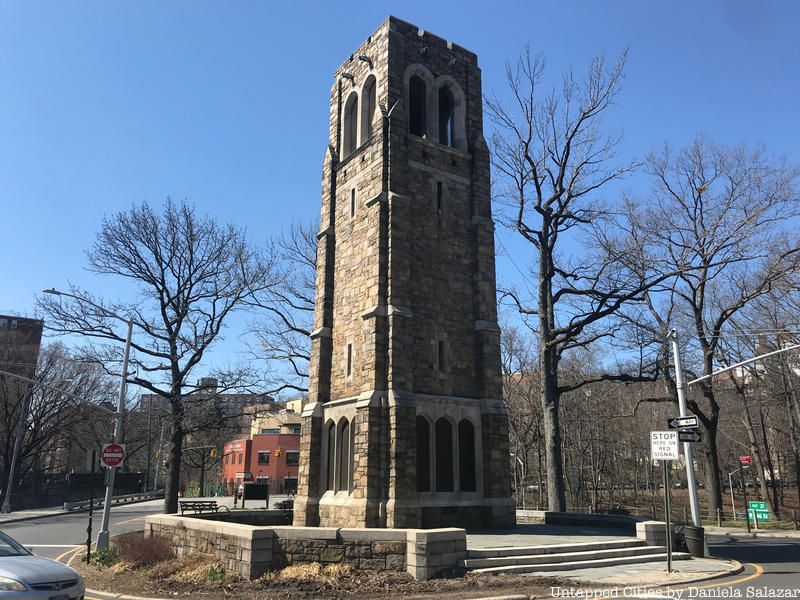
The Riverdale Monument was erected in 1930 to honor veterans of World War I from the Riverdale, Spuyten Duyvil and Kingsbridge areas. Its history is an itinerant one: the tower alone moved 700 feet in 1936 to its present day location. The bell within the monument was originally housed in a Mexican monastery until its capture in the Mexican War, when it was placed in Greenwich Village, then moved to the local Riverdale firehouse until finally settling inside the monument in 1930. Weighing in at 500 tons of fieldstone and limestone, the monument was designed by Dwight James Baum, an architect responsible for a smattering of Riverdale residences.
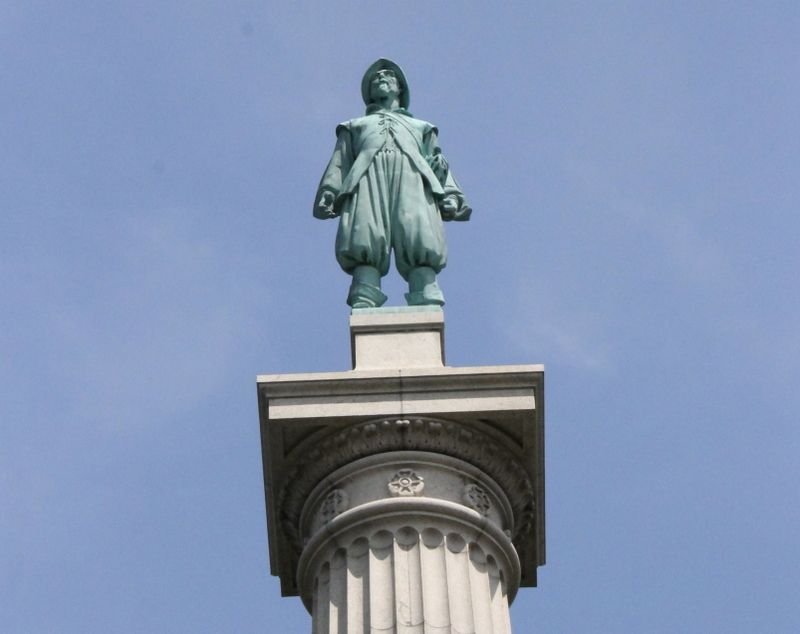
Image courtesy of Lev Wolfson
Ah, Henry Hudson, the English seafarer whose name graces so many of Riverdale’s features: Henry Hudson Parkway, the Hudson River, and Hudson Park, which hosts a Hudson statue. Hudson claimed New York in 1609 on behalf of the Dutch, effectively opening the way for Dutch colonization of the land. Commissioned in 1909, the statue marks the 300-year anniversary of Hudson’s river journey on his ship The Half Moon. The unveiling took place in 1938. The monument consists of a 100-foot Milford pink granite column designed by architect Walter Cook, topped by a 16-foot statue of the explorer himself (started by sculptor Karl Bitter and completed by his student Karl Heinrick Gruppe). Trousers flared, gaze resolute, Hudson looks out at the river that bears his name.
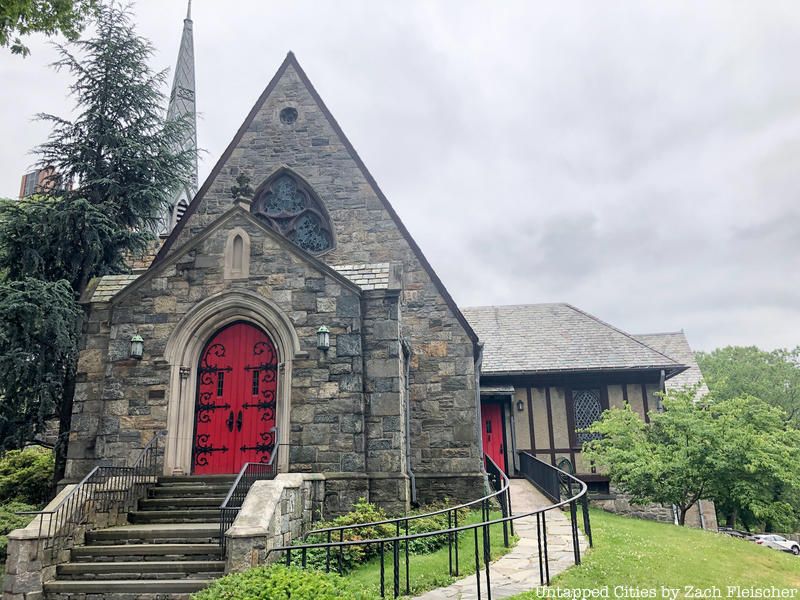
You can spot this humble representative of late Gothic Revival architecture from a mile away. The Riverdale Presbyterian Church is instantly recognizable from afar by the brightly-painted red door at its entrance. Come closer and you’ll see steep slate roofs, a copper steeple, and stone detailing typical of Gothic Revival buildings. The Duff House – formerly the minister’s residence but now an administrative office used by the Church – is just couple of feet away. Designed by architect James Renwick Jr., the little church was built in 1863, accessible by dirt road and horse and buggy. Designated a New York City Landmark in 1966, the church continues to serve the Presbyterian community of Riverdale.
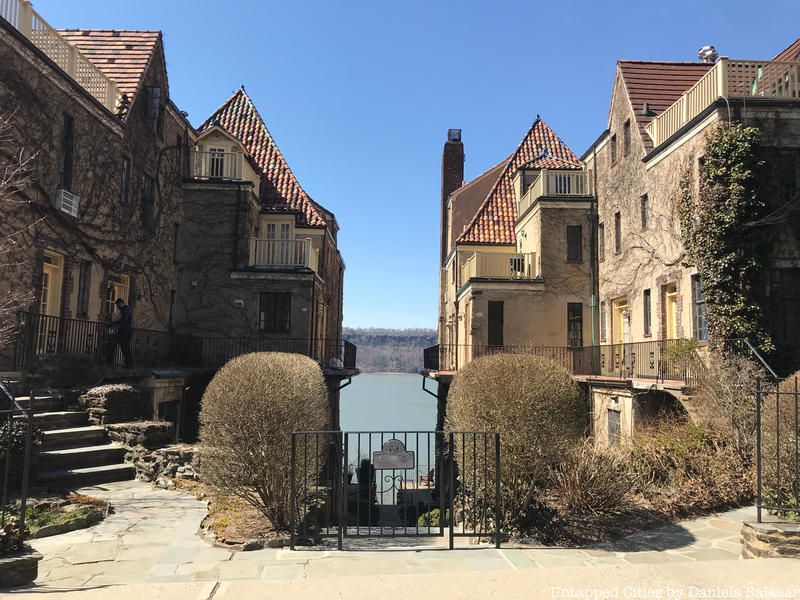
One of the area’s most charming residencies is Villa Charlotte Bronte. Located along Palisade Avenue in Spuyten Duyvil, this unique manor was designed, like many of the Riverdale residencies, to be a pastoral escape from the noise and rush of the city. It was constructed in 1926 by John J. McKelvey, a lawyer, writer and developer, as a place for someone whose “soul is hungry for the majesty of the river,” according to his ad for the place in the New York Times. True to its description even today, the house offers unobstructed and picturesque views of the Hudson River.
McKelvey constructed this house as an answer to the mass construction of buildings on Manhattan, what he described as “city ugly.” Designed in the style of an Italian villa, Villa Charlotte Bronte was made up of 17 co-op apartments connected by walkways, stone arches, and staircases, with two sections separated by a central courtyard. The exterior, made from stucco, features brick and stone ornamentation and multi-colored tiled roofs.
Each apartment has its own unique floor plan and view of the Hudson, adding to their incredible cost. These apartments today sell for upwards of $1 million.
As for the complex’s name, McKelvey picked Charlotte Bronte because of his love of literature. The theme follows after his first project in the area, Villa Rosa Bonheur, a seven co-op apartment complex constructed in the same style as Villa Charlotte Bronte.
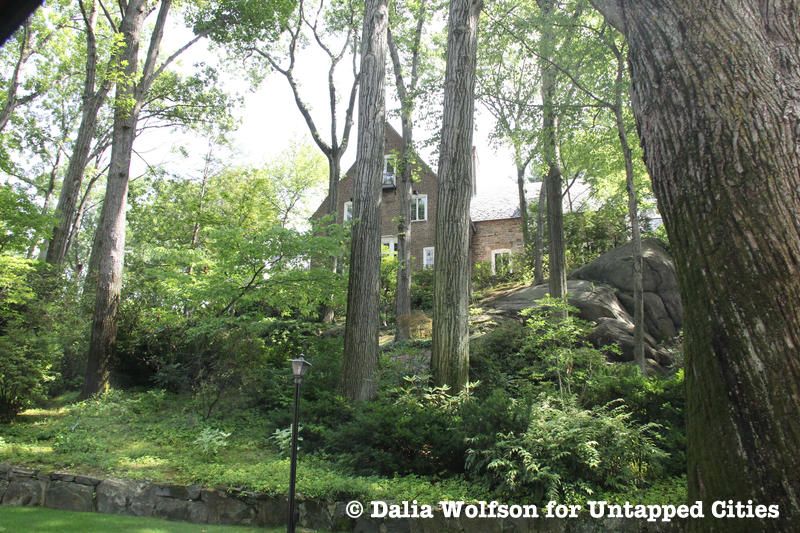
The plot of land that would later become Fieldston was originally purchased by the Delafield Estate in 1829. When the Interborough Rapid Transit subway caught up to West 242nd, the Delafield heirs realized that the time was ripe to develop the area. In 1909, the Delafield Estate used money from a sale of a few acres to fund the building of plots. As each plot was sold, money was applied towards grading streets and installing utilities, slowly creating a “country in the city.”
The secret to Fieldston’s bucolic charm is embedded in the vision of its architects. Surveying the area in 1876, Frederick Law Olmsted (of Central Park fame) and James R. Croes recommended a layout that complemented the natural contours of the land. Bucking the standard neat-grid plans of the city, engineer Albert Wheeler designed a final plan in 1914 that worked around Fieldston’s “wooded knolls, dells and hillocks,” keeping things interesting by varying plot size.
As for the houses, an Architectural Committee approved designs based on a list of architects (prominent architects Dwight James Baum and Julius Gregory were especially popular). The resulting landscape was a collection of revival styles: Medieval, English Tudor, Mediterranean, Dutch, and Georgian Colonial. The Fieldston Property Owners Association relaxed its design standards in the 1950s, and some formal modernist houses slipped in. Nevertheless, more traditional revival styles dominate the landscape: more than 200 of over 260 houses in the district were built before 1940. For a detailed listing house-by-house, check out the designation report, complete with architect biographies and addresses.
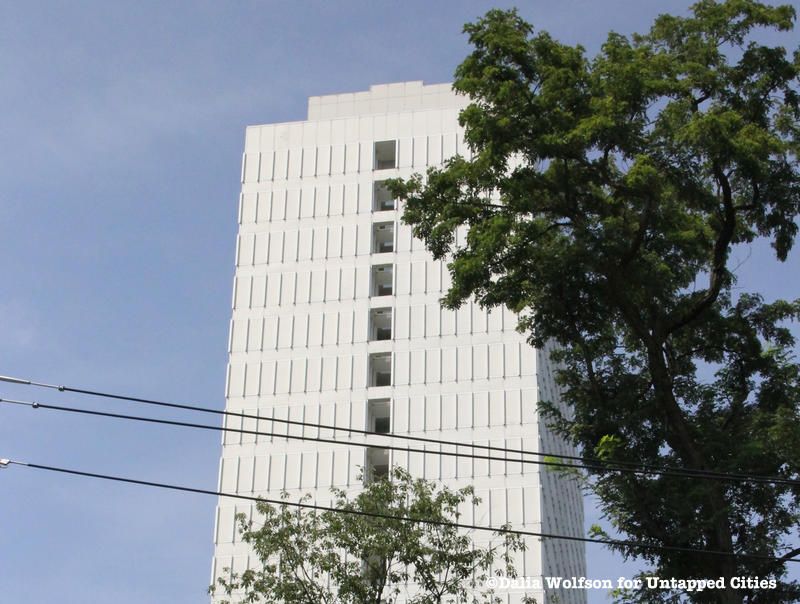
Usually neighborhood guides focus on sites that are accessible, but part of the intrigue behind this particular landmark is its impenetrability. This tall, gray-ish eyesore in the Riverdale skyline is operated by the Russian Ministry of Foreign Affairs. If you’re interested in Cold War history, the first place to look for Russian operatives might be the Russian Mission Residency, home to Russian diplomats and their families. When the USSR existed, American kids could see Soviet children up-close-and-personal at the Russian Mission School (housed in this very building). Though the regimes have since changed, the Russian Mission Residency remains equally forbidding: think hushed voices, few visitors, and a tall white fence blocking the entrance.
Feeling adventurous? Maybe you can solve the mystery of the house right in front of the Mission, rumored to be a spy house (for the F.B.I., or so people think).
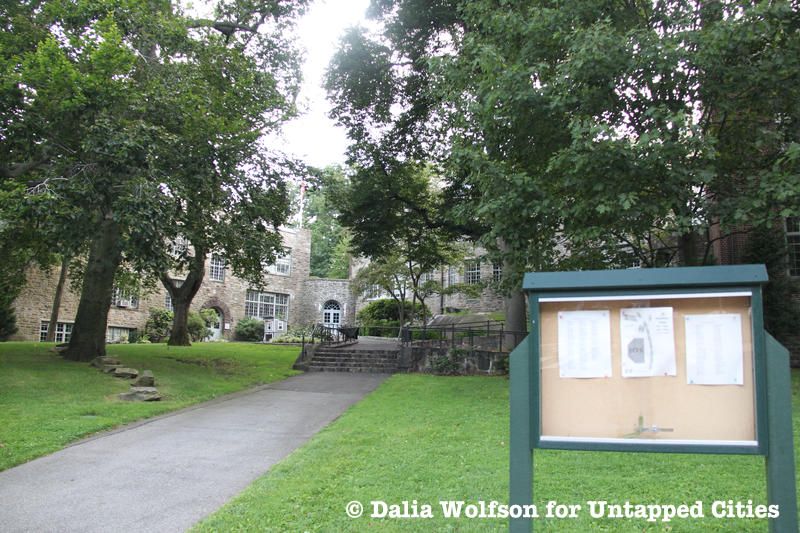
Riverdale houses two major institutions of the Ethical Culture movement, a secular humanist movement with origins in turn of the century. Founded in 1877 by German-Jewish intellectual Felix Adler, the New York Society for Ethical Culture advocated a morality separate from religious doctrine that nevertheless could be expressed in congregational organization, behavioral codes, and rituals. Many of the New York Society’s activities were devoted to social justice and education programs, and local societies devoted to social betterment sprang up around the country as well. The Ethical Culture movement currently counts over 22 societies and fellowships around the country.
One of the New York Society for Ethical Culture’s first projects was the establishment of a free kindergarten, the Workingman’s School, in 1880. In 1895 it was reorganized as the Ethical Culture School. To accommodate the upper grades, Fieldston School was built in 1928. By 1933 the Fieldston Lower School (second elementary) joined the Riverdale campus, and in 2007 grades 6-8 were added as part of the Fieldston Middle School. Just across from the Fieldston School is the Riverdale-Yonkers Society for Ethical Culture, founded in 1948. As is typical for an Ethical Culture society, this society has an “Ethical Leader” and holds regular Sunday meetings, in addition to hosting various educational and volunteering programs.
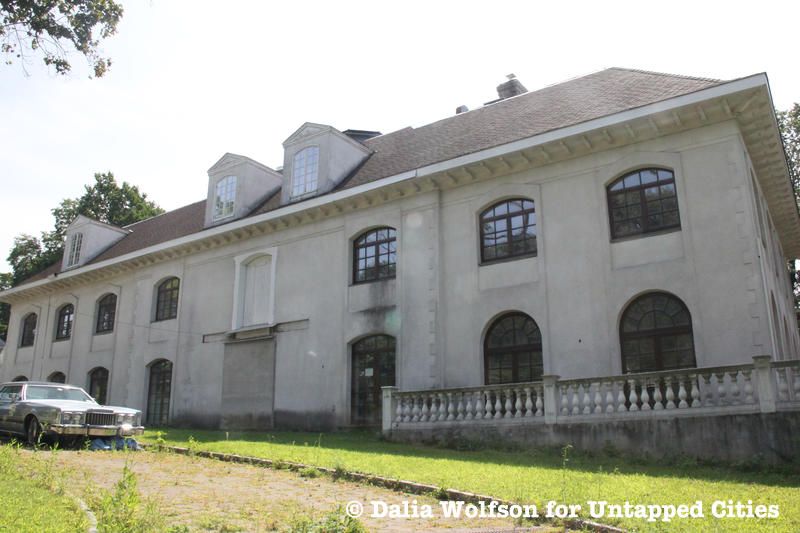
You wouldn’t know it by the dirtied stucco and grimy windows, but the three-story house on 5040 Independence Avenue was once John F. Kennedy’s childhood home. With 20 bedrooms and a roomy backyard, this mansion had plenty of space for the future president to play. JFK lived in Riverdale from 1927-1929, attending the nearby Riverdale Country Day School.
Nowadays the house stands neglected: half-wrapped desks lie abandoned in large rooms, and a long-nosed vintage car in the driveway looks like it’s been parked there since the ’60s. Only a quick peek through the windows of Western wing reveals what appears to be newly renovated kitchen cabinetry. Is this a sign of life or a recently failed attempt at revival? Only the neighborhood squirrels know.

Most of Riverdale’s fast, fun facts originate at Wave Hill. Consider the names that have stayed at its central house: Mark Twain, a young Teddy Roosevelt, and Italian conductor Arturo Toscanini. Wave Hill is a sprawling 28-acre garden with the Wave Hill House as its center of activity. Built by attorney William Lewis Morris in the Greek Revival style in the 1840s, Wave Hill House received its name from the wave-like rolling hills (or, potentially, the way that mainlanders waved at boats floating down along the Hudson).
Owners changed several times, as did styles. Publisher William Henry Appleton recrafted the house in a Victorian villa style, and the daughter of a Mr. Perkins favored English country manor house details over Victorian decoration. Some renters also left a personal touch. Bashford Dean, a curator at the Metropolitan Museum of Art, added a Gothic-style wing that is now popular for wedding receptions. Toscanini left so many items behind that when he departed, the cleaners referred to his room as “Toscanini’s closet.” The house was finally donated to the city in 1960, and a new era for Wave Hill began.
Nowadays many programs are run from the house: concerts, workshops ranging from beekeeping to candle-making, and internships for school children. For the day visitor, Wave Hill’s indoor offerings include regular exhibitions at the Glyndor Gallery and fun craft-making activities for the kids. To meet some funky plants, step into the conservatory with its cactuses and tropical arrangements. Enjoy the Hudson River views from the Pergola, or lounge around on Conifer Slope.
Accessible from the last three stops of the 1 train (231st, 238th and 242nd), Riverdale already starts feeling less like the city and more like the suburbs, or even – in some parts – the wild. Tree-lined walks, generous yards and surprise wooded areas make the neighborhood a green oasis in New York. Nowhere is this more apparent than Riverdale Park. Though only minutes away from the Metro-North, this park feels like a slice of forest. Ferns, mossed-up oaks, and long shadows cast by old trees make this park a wonderful retreat from that trademark New York hustle n’ bustle.
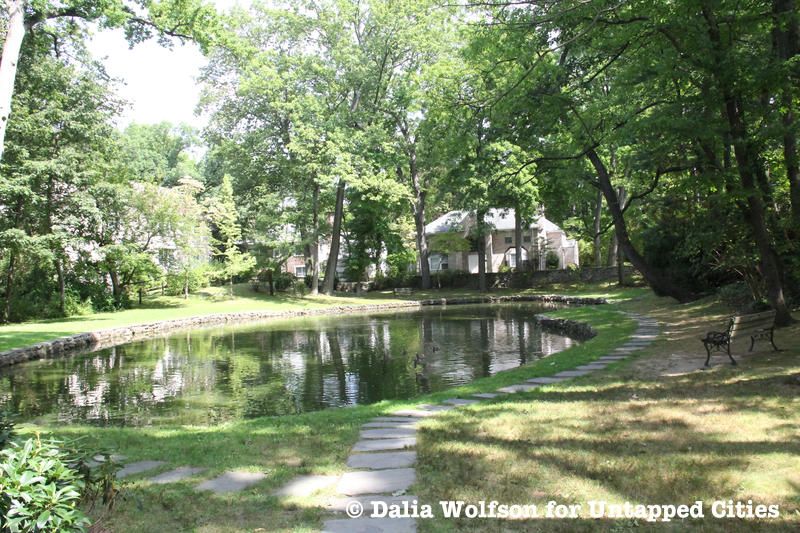
This tranquil pond in the middle of Delafield Park is the perfect detour on a leisurely walk through Fieldston. Three benches and beautiful houses all around make for a peaceful atmosphere. As far as wildlife goes, the pond is frequented by ducks and has been known to host a stork in summer weather. Sometimes the water will be clear as day and other times the algal blooms take over. If you’re lucky you may even spot the orange-gold koi darting around and baby turtles following their mom to tan on a rock.
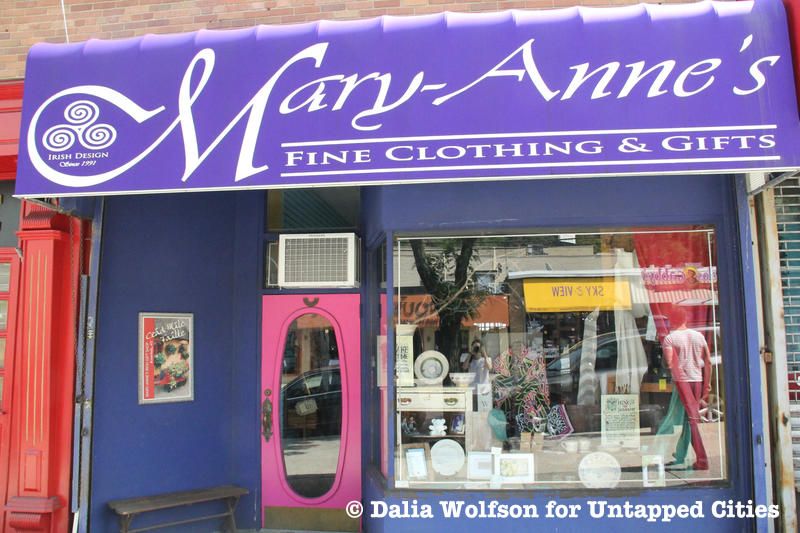
Need a linen dress for your niece’s communion? Fancy a Woven Silk Book of Kells Tie for your favorite gent? This cozy shop offers authentic imported goods from Ireland, many of them hand-picked by owner Mary-Anne Connaughton and her team.
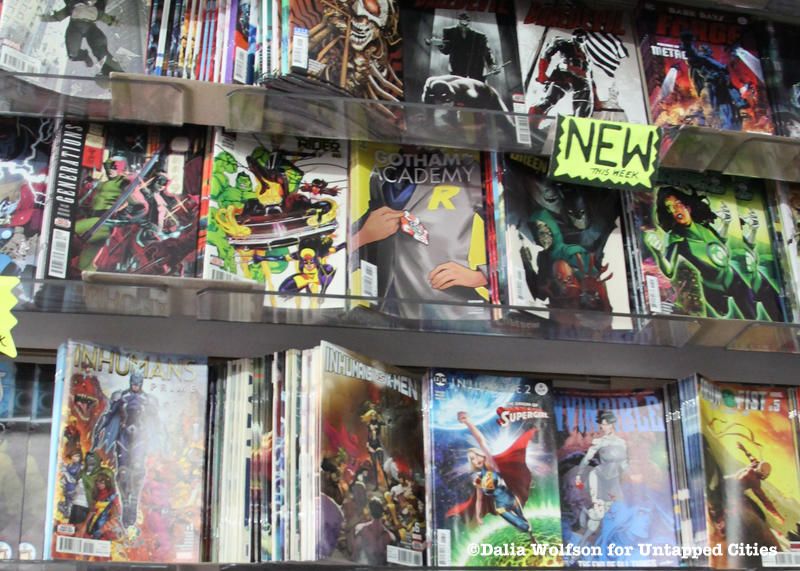
Archie Comics may be set in a creepy Riverdale that’s not remotely near this one, but that doesn’t mean you can’t find great comic books in the neighborhood. Magnum Comics is the destination for good old-fashioned paper comics with rows of multicolored heroes and villains stacked together in this small shop. Perhaps the release of Wonder Woman will lead to stronger sales.
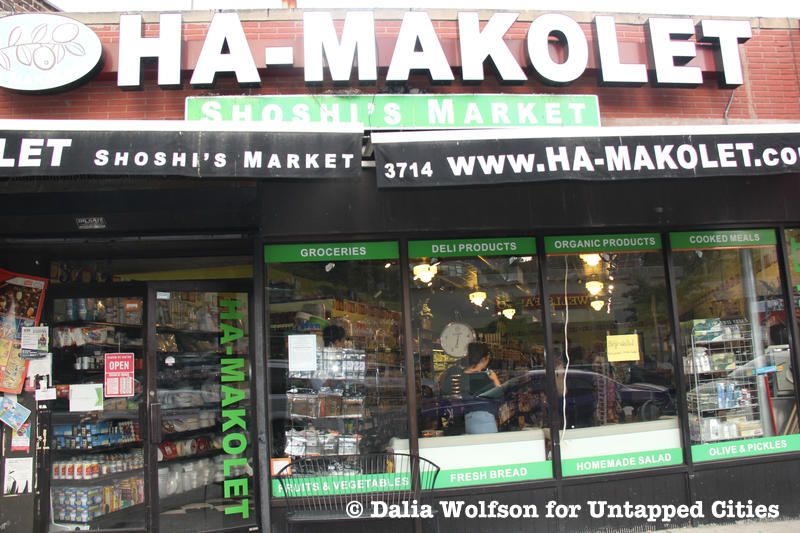
“Ha-makolet” is an Israeli term for a mini-market, and Shoshi’s Ha-Makolet offers Mediterranean, kosher fare straight from the source. Named for owner Shoshana Allon, Shoshi’s market stocks everything from Bamba, the peanut-based Israeli version of Cheetos, to Kariot, small chocolate-filled cereal pillows beloved by sabra kids. Stop in for fresh falafel with hummus, and a classic Israeli salad.
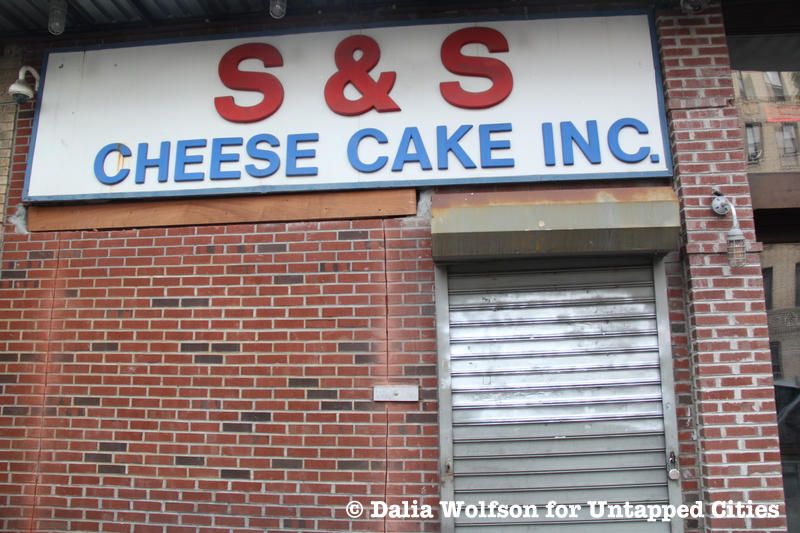
S&S Cheesecake is hands-down the best cheesecake in New York (and Zagat knows it). Flush next to the 238th 1 train stop (and a 5 minute walk to Riverdale), this little bakery puts out the fluffiest, most delicious cheesecake from its unassuming shopfront. S&S Cheesecake is only open on weekdays until 3pm and sells cheesecake by the cake (no skinny one-slice orders), so prep both your stomach and schedule in advance.
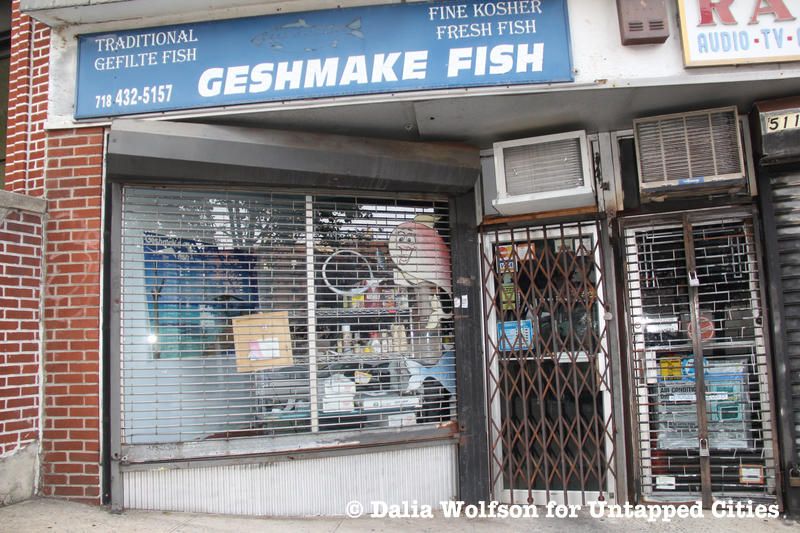
You can’t catch gefilte fish in the wild, but you can buy it at Geshmake Fish. Gefilte fish is actually just a term for deboned, ground fish with variable ingredients (geshmake means “delicious” in Yiddish), a dish whose origins are in the Orthodox Jewish community. Gefilte fish’s form allows observant Jews to consume fish without breaking the Sabbath prohibition of borer: a type of labor specifically related to separating and sifting (in this case, separating non-edible bones from edible fish pulp).
At the counter, you’ll be greeted by the Hassid who owns the place. In addition to gefilte logs (cook them up with carrots, onions, and broth), Geshmake Fish also serves up other fresh fish options, including cuts of salmon and tuna. Be sure to time your visit well since the owner leaves early on Fridays to make it home in time for candle-lighting.
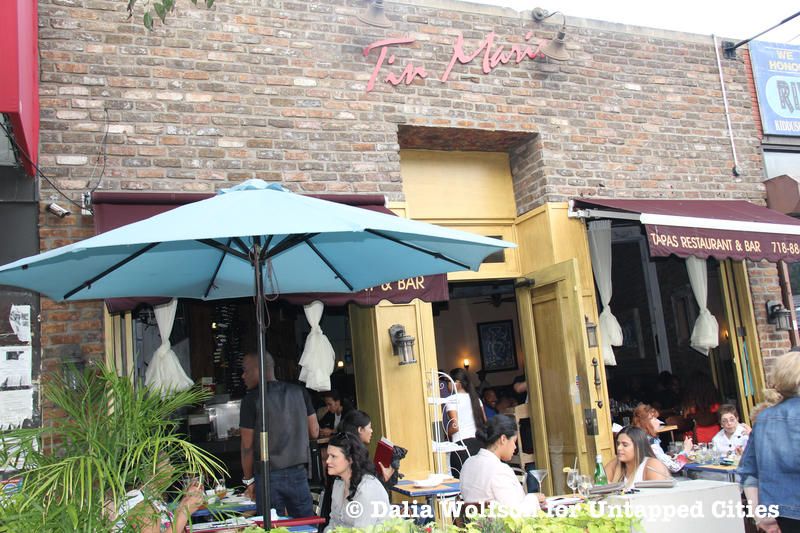
Riverdale is a sleepy town. By 11pm the streets are mostly empty. But Tin Marin adds some zest and life to the neighborhood after hours, closing anywhere between 12 and 4am. The drinks menu suits a late-night date or hang-out with friends thanks to the unbeatable Daily Drink Specials: Monday mojitos, Tuesday margaritas, Wednesday Caipirinhas, and Thursday Sangrias all for 5$ all night. Live music shows on the later side (9 to 10:30pm), often featuring local musicians, are a great accompaniment to a warm meal and a cool drink.
If you go in during the day, Tin Marin promises an extensive Latin-inspired menu: tapas galore (from mofonguito de camaraones to pastelitos), with sides like yucca puree and skirt steak a la parillla fresh off the grill. If all that’s too much, though, there’s always a cheeseburger on the kids’ menu.
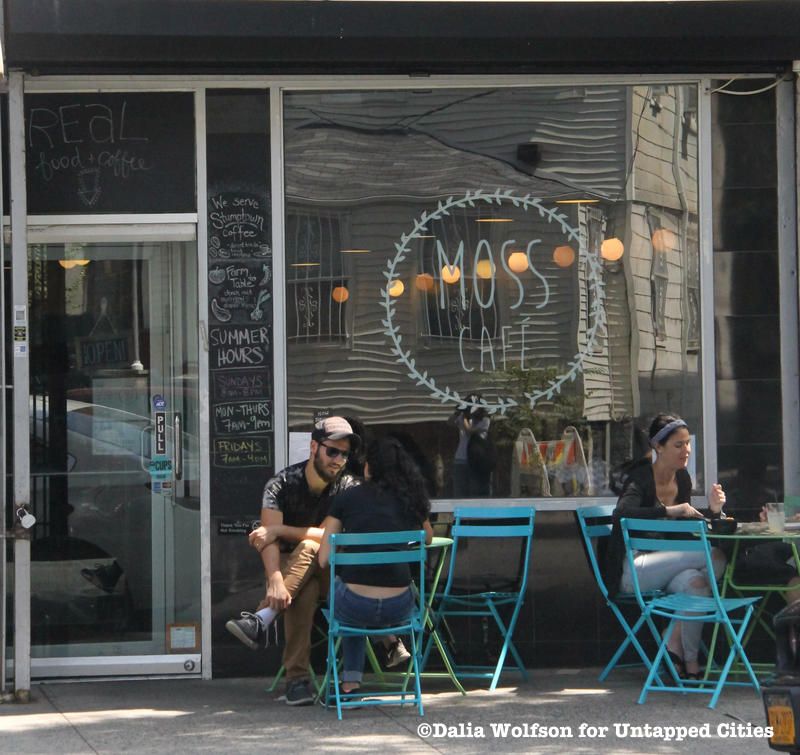
When it comes to cafes, Riverdale’s commercial areas are dotted with frozen yogurt shops and bagel spots, a lone Starbucks, and a persistent Subway. Moss Cafe is a welcome exception. Opened in June 2015, Moss Cafe was dreamed up by Emily Weisberg, a chef who comes from a family of farmers and restaurateurs in Wisconsin.
With its Instagramable bowls, bright-green chairs, and hip community vibe, this farm-to-table cafe and espresso bar could be a Williamsburg transplant. Featuring a constantly changing menu, Moss Cafe serves up inventive fare sourced from local farms, many of them in New York. The Hudson Valley Fresh co-op provides dairy ingredients, and the cafe’s bee pollen comes from the Natures Way Aviary. Come for the hearty tofu Reuben or the portobello burger on a weekday, or indulge in a gravlax tartine for a Sunday brunch. Drinks include the wine, Stumptown coffee, tea, and even “tej,” an Ethiopian honey mead.
Technically in Kingsbridge, the Bronx Alehouse is just minutes away from Riverdale. The bar’s specialty is its beer selections, which are exceptional in scope and stock. In addition to 30 bottles, the bar serves 17 beers on draft: a real time tap list – among them local craft brews- appears on the website, complete with alcohol content diagrams. The @BronxAlehouse Twitter account (bio: “Drink Real Beer!”) is updated regularly with what draft’s on and what’s been replaced. True loyalists who drink 100 different types of beer are welcomed into the Beer Club and awarded a place on the pub’s walk of fame.
For a savory bite, grab the pub menu and order the people’s favorite: wings. You can even “double cook ’em (fried then grilled) for $1.”
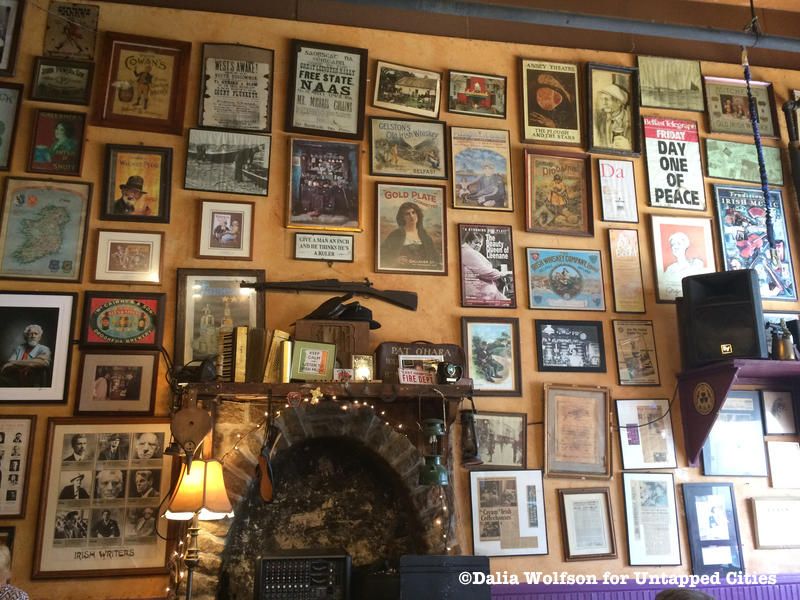
Riverdale has long had a proud Irish community, and nowhere is this cultural heritage better represented than at An Beal Bocht. Opened in the 1970s as an Irish coffee shop, An Beal Bocht tody offers drinks and various food fare, but its focus remains on community and warmth. You’ll find delicious home-cooked meals here, and the bartenders know everyone by name. An Beal Bocht also hosts a theater company and a full roster of weekly cultural events ranging from concerts to open mic nights.
Make sure to check out the walls in this place. One wall of the main room is entirely covered in framed pictures and posters of Irish origin collected by the owner. A mural of Ireland’s most famous writers (Beckett, Joyce, etc.) decorates the entrance into the upper room.
Next, check out Wave Hill: A Historic Villa in the Bronx Where Nature and Art Collide and Top 5 Places to Find the Outdoors in the Bronx, the Borough with the Most Parks in NYC
Subscribe to our newsletter